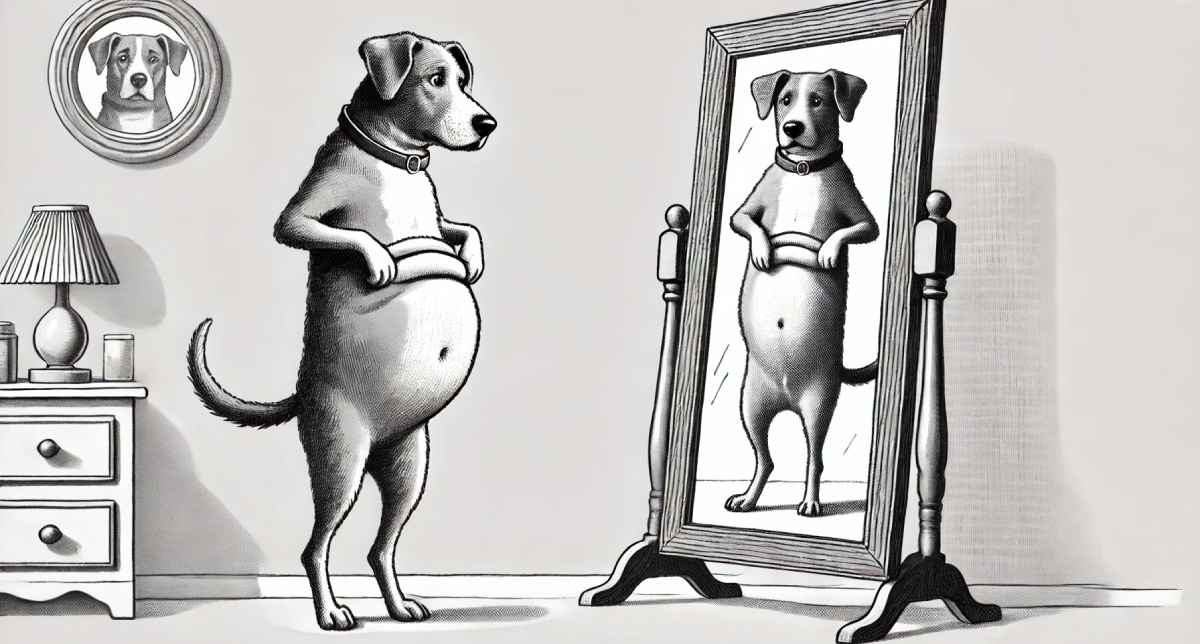Weight loss kibble for dogs aims to help overweight dogs slim down. While one might think they’re all similar, there’s actually a wide variation in quality and nutrient levels among diet dog foods on the market.
Surprisingly, there are even some aberrations at times. For example, some have very high carbohydrate levels, even higher than in regular kibble. Let’s see how to identify good weight loss kibble for your dog.
There are several key criteria to consider:
| Criterion | Recommendation | Role |
|---|---|---|
| Protein content | 30-40% (PCR > 85) | Preserve muscle mass and increase energy expenditure through thermogenic effect. |
| Fat content | 7-13% (less than 15%) | Reduce caloric intake while maintaining skin and joint health. |
| Carbohydrate content | Less than 25-30% | Stabilize blood sugar and avoid excessive fat storage. |
| Energy density | 2800-3500 kcal/kg | Allow the dog to feel satiated while consuming fewer calories. |
| Crude fiber content | 4-10% | Increase satiety and reduce caloric density of the kibble. |
Some good examples of weight loss kibbles:
- Virbac Weight Loss W1 for obese dogs.
- Virbac Weight Loss W2 : for overweight dogs.
As these are therapeutic diets, once your dog returns to a normal weight, it’s advisable to switch back to high-quality regular kibble. You can also consider transitioning to more natural alternatives such as home-cooked diets, fresh food diets or a raw food diet.
Proteins
Proteins are crucial for weight loss, not only preserving muscle mass but also beneficial due to their high thermic effect.
Indeed, about 20-30% of protein calories are expended simply through digestion, naturally increasing energy expenditure.
Weight loss kibble for dogs should ideally contain 30-40% high-quality proteins from lean sources like chicken, turkey, and fish.
Fats
Although necessary for the absorption of fat-soluble vitamins and skin health, fats should be reduced in weight loss dog food. Excess dietary fats are easily stored as adipose tissue.
An aggressive fat content of 8-10% in kibble is sometimes desirable, with essential fatty acid (omega-3) supplementation to limit inflammation. In some light kibbles, fats are less reduced and range from 10% to 13%, which is still effective.
Carbohydrates
Carbohydrates should also be of high quality and have a low glycemic index. Whole grains or sweet potatoes, for example.
Ideally, look for kibble with a carbohydrate content below 25% and complex carbohydrate sources.
Fibers
Fibers play a mathematical and mechanical role by increasing satiety while reducing the caloric density of kibble.
Aim for crude fiber (or crude cellulose) levels between 4% and 10%.
Energy Density
Diet dog kibbles have a reduced energy density to trick the dog’s stomach and brain. They allow the dog to feel satiated without ingesting too many calories.
Generally, kibbles for overweight dogs range between 3000 kcal/kg and 3500 kcal/kg.
L-carnitine and Micronutrients
L-carnitine, often added to weight loss kibbles, aids in fat metabolism. It transports fats to the mitochondria to be burned as energy.
Omega-3 and Joint Supplements
Omega-3s can improve insulin sensitivity and help better regulate fat metabolism. They also support cardiovascular and joint health, thus reducing risks associated with obesity, such as osteoarthritis and heart disease.
Probiotics
They promote a healthy gut flora, which will improve digestion and nutrient absorption. A balanced gut flora can improve fat metabolism and better regulate appetite.
Antioxidants
Antioxidants play a crucial role in protecting the body’s cells against oxidative damage caused by free radicals, which are unstable molecules produced in excess in metabolic stress situations, such as being overweight.
Final Word
Most kibbles on the market are too high in carbohydrates and too low in proteins. This leads to obesity, especially in less active and neutered dogs. There are, of course, other alternatives to kibble, such as homemade diets that are naturally more digestible, nutritious, and balanced than kibble.
Note that special diet kibbles are often “aggressive” on the digestive system, which can sometimes lead to vitamin and mineral losses due to excess fiber. Therefore, consider looking for more moderate kibbles once your dog has lost the weight it needed to lose. If some day, your dog need to gain weight, take the advice in this post and reverse it or read our post : which dry food to gain weight.


